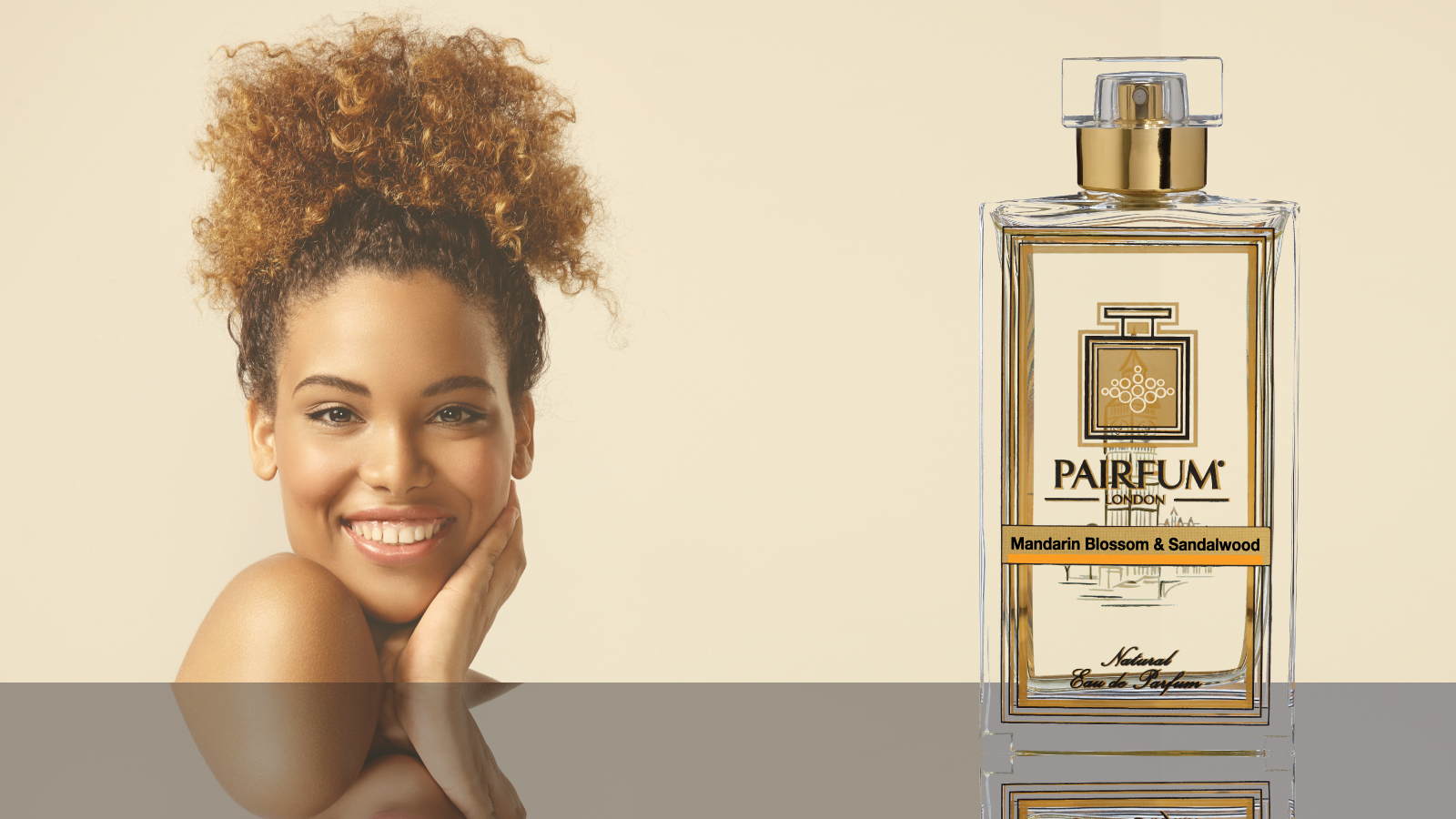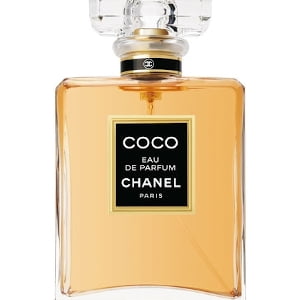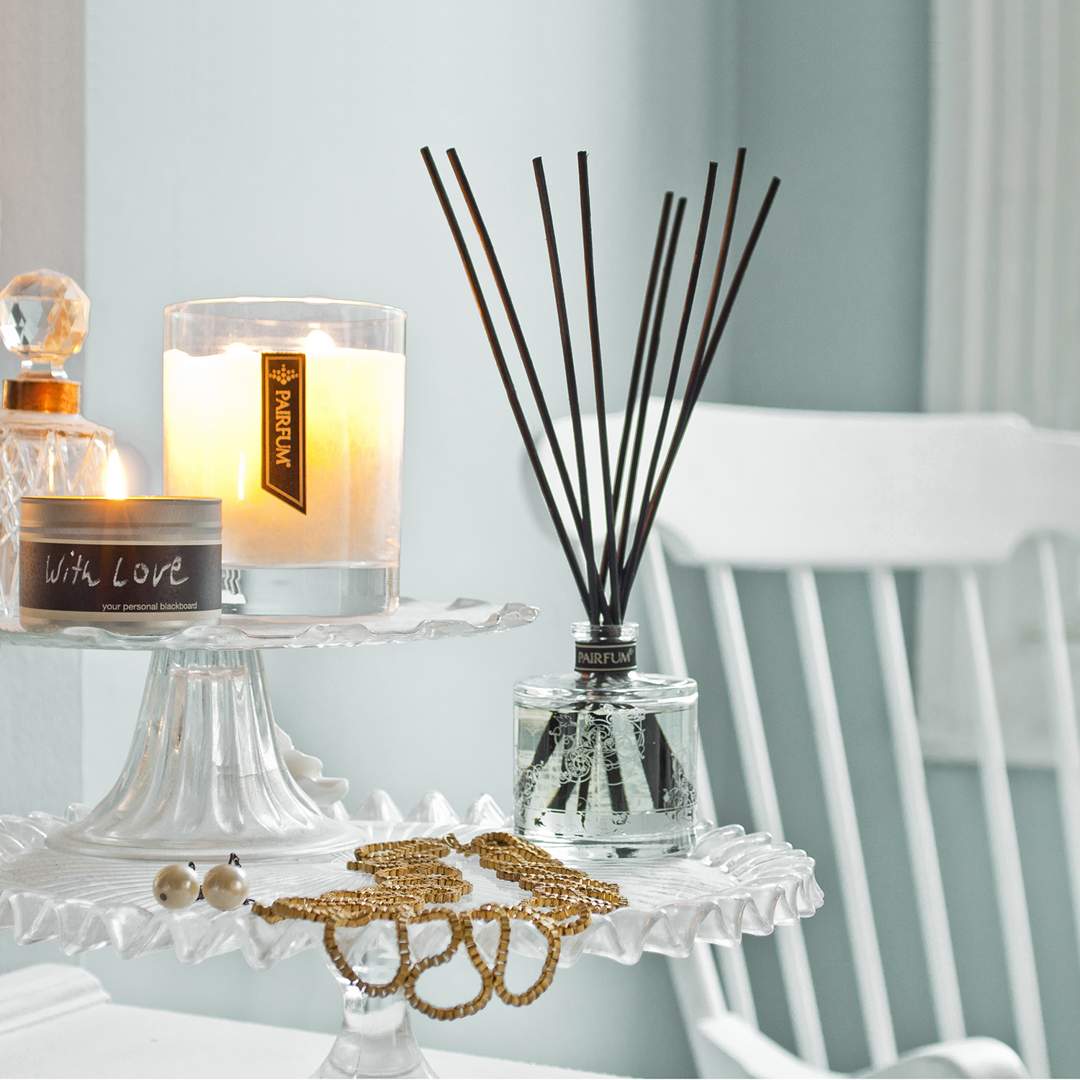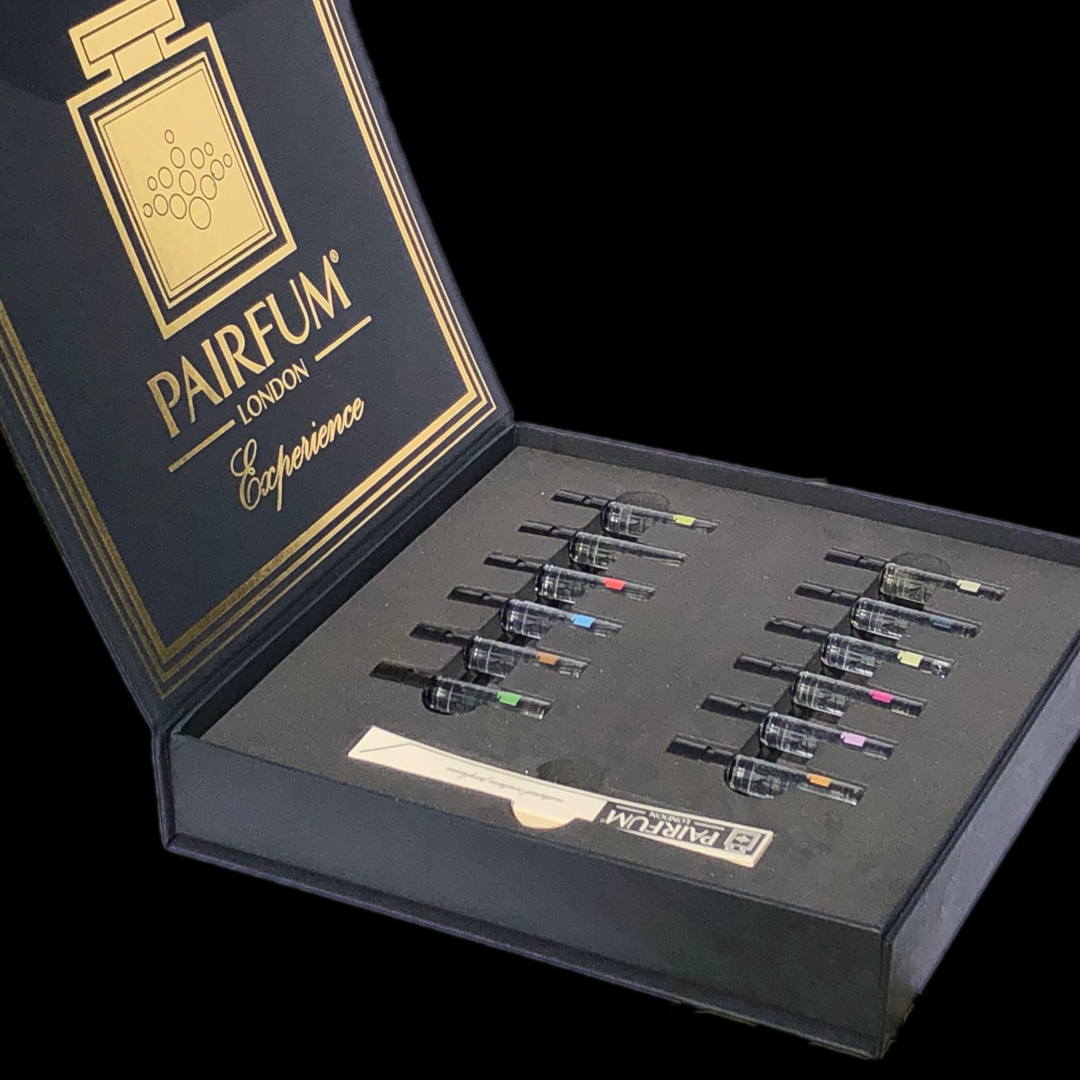The History of Perfume - A Curious Tale
How did perfume evolve from ancient civilizations through to the present day?
An Introduction To The History Of Perfume
The history of perfume is fascinating, complex and intrinsically linked to the development of human society around the world.
The first recorded use of ‘perfume’ dates back to when ancient cultures burned incense and enjoyed the resulting pleasant aromas.
Perfume as a noun finds its origins in the Latin phrase ‘per fumus’ which translates to “through smoke”. Although, the French later also invented the term ‘parfum’ to describe the burning of incense in order to produce a fragrance.
The History Of Perfume Is Not Only For Enthusiasts
We are passionate about the origins of perfume



The Ancient History Of Perfume
This history of perfume in ancient civilizations started as an offering to the gods because it was thought to cause sublimation of the body to make it more ‘god-like’. The earliest recorded use of ‘perfume’ is when the Mesopotamians first discovered incense 4000 years ago.
Fragrance (as we know it today) did not exist in Egypt, Greece nor any other ancient societies. The aromas they produced would simply come from raw materials. Popular ingredients for perfumes, such as scented botanicals and resins, were used in ancient times during ceremonies to show devotion to the gods.
However, throughout the ancient civilisations, the interest in aromatic ingredients grew exponentially, as did the variety of their applications. The rich and poor alike were able to make use of such inventions as fermented liquors, fumigations, balms and even oils in an attempt to feel closer to their gods.
This is believed to be the first period in the history of perfume where a strong association was established between fragrance, beauty and power.
Although, in the years that followed this esteemed association would decline into decadence. In contrast to their previous sacred associations, perfumes later became quintessential of raucous orgies.
The History Of Perfume is Multi-Faceted
The history of perfume is just as complex as the humans who wear them

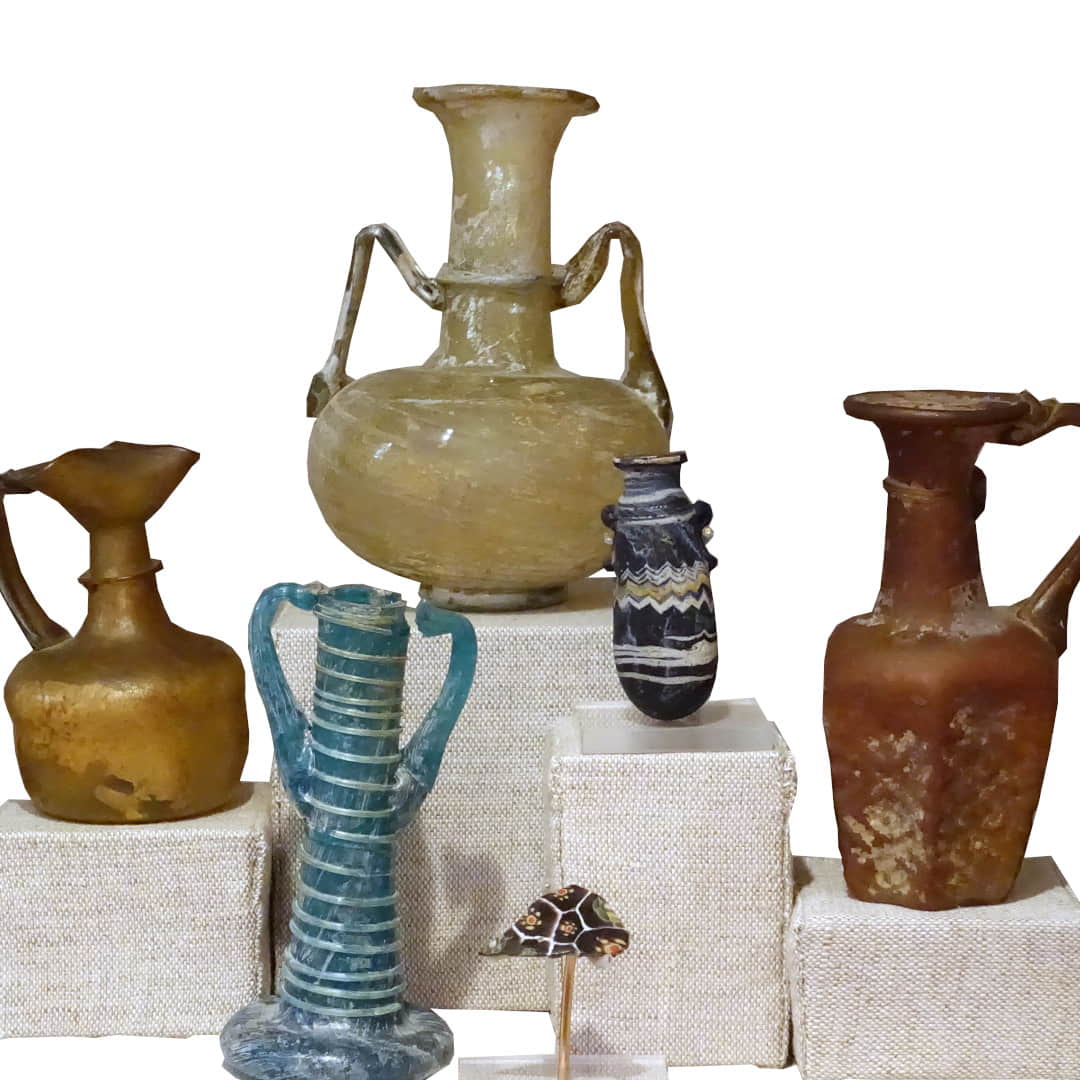

Ancient Egypt
We have traced the history of perfume in Egypt to when it first arrived at its shores around 3000 B.C. From there, its popularity grew exponentially under the rule of Queen Hatshepsut.
The Queen would lead expeditions in search of incense and other valuable commodities that were received with such admiration and awe that these expeditions are recorded throughout the temple built in her honour.
Furthermore, perfume was of great prominence throughout the Egyptian high society as well as their spirituality with Nefertem (an Egyptian god) being appointed the ‘Lord of Perfume’.
The most popular Egyptian fragrances were derived from aromatic woods, fruits, and even local flowers. Although, when it came to international relations and commerce, the trade of incense and myrrh proved most effective.
Perfumes & Fragrances Played A Key Role In Ancient Civilisations
Ancient Egypt, Greece, Rome and China

Ancient Persia
The history of perfume during ancient Persia can be summarised in two words: pivotal and innovative.
Persia dominated the international perfume trade for centuries. They were given this prestige by becoming the first developers of non-oil based perfume and the innovative practice of infusing fragrances with water.
Recovered documentation indicates that throughout Persia there was an abundance of fragrance-producing workshops and perfume-manufacturing equipment.
It is needless to say that the modern perfume industry owes a great debt to Persian ingenuity. The Persians conducted extensive experiments to improve upon distillation processes and the quality of the aromas they produced. But perhaps one of their greatest innovations was being the first to create non-oil based perfumes.
Perfume was held consistently in high regard by the nobility in this ancient civilisation. This opinion was also shared throughout ancient Persia. Inside Persia, the wearing of perfume may have been an exclusivity reserved only for royalty who would often demand that paintings and art be created depicting them with bottles of perfume and holding flowers in their hands.
Ancient Civilisations & the Perfume Industry
An Era Of Commerce & Innovation



Ancient China
An often forgotten but incredibly important and influential part of the history of perfumery is that of the ancient civilisations further east. Ancient china actually took their adoption of perfume much more mainstream where even simple items such as stationery and ink would be infused with perfume.
While they would also use perfume in religious ceremonies, rather than for just grand occasions, perfume would be used to decorate places within the home that were also dedicated to worship.
The Chinese were pioneers in regards to using perfume for (perceived) medicinal purposes by ‘purifying’ the environment around them, e.g. ridding the area of disease. They took the approach that 'prevention is better than cure' and usually applied perfume to rooms and objects rather than themselves or each other when looking for health and wellbeing benefits.
Unlike their other ancient counterparts, it is believed that they were amongst the first through the history of perfume who placed a heavy emphasis on oriental herbs and spices. By taking advantage of the fragrant smells from their foods and medicines, the nobility was able to import ingredients via the silk roads to create personal fragrances.
Another curious part of the history of perfume throughout ancient china is the use of fragrance being spread much more widely across the general populace. Historians believe this trend was established through the Yuan, Ming and Qing dynasties.
The Recreation Of Ancient Perfumes
Historians have found several documents detailing the manufacturing processes from ancient civilisations



Ancient Rome
Authentic perfumes from ancient Rome can actually be experienced today thanks to ancient Romans and Greeks having the foresight to document their processes for perfume making.
Fortunately, historians have been able to help perfume houses to recreate one fragrance that dates back to 1850 B.C. and is thought to have been originally manufactured in the oldest perfume factory in the world.
Similar to Persia, perfume had a significant impact on the economy of ancient Rome. They developed a global commercial network from what previously could be described as a basic farming village.
Immense imports of frankincense and myrrh every year allowed fragrances to be more widely available. Oil perfumes for both hair and skin were used for general body care as well as in public bathhouses.
However, it must be recognised that this passion and acceptance of perfumes was not universal. In fact, many associated perfume and fragrance with wastefulness and opulence. Unfortunately, as the roman empire fell, so did its perfume industry with perfume and similar luxuries and products being forbidden.
This sentiment is often attributed to Pliny the Elder who was undeniably a key figure in the history of perfume during the era of the Roman Empire and its demise.
Fragrance & The Aristocracy
Historically, perfumes were worn (almost) exclusively by the upper classes and nobility



The History Of Perfume - The Middle Ages
The travels of the crusades and the expeditions from Marco provided a tremendous impetus to the spice industry, the use of new raw materials and fragrance techniques. The history of perfume has one of its more significant developments when European alchemists started to use ethyl alcohol in their distillation processes.
Once again, the use of scented fragrances blossomed to produce a new art of living. Femininity was celebrated passionately by artists such as poets as well as couples indulging in scented baths for carnal pleasures.
Throughout the middle ages, perfumes were beginning to be explored in regards to their possible health benefits despite alchemy being outlawed by The Church. Oriental perfumes provided whispers of carnal pleasures and fragrant plants were used with the belief that they protected against disease.
This discovery was destined to prove invaluable when protecting oneself from the "Bubonic Plague". Doctors would fill their ‘bird-like masks’ with oils, herbs and spices and wear them similar in a manner to modern-day PPE.
The perception that fragrant defences were effective against deadly and infectious diseases led to an explosion of perfume wearing throughout medieval Europe.
Innovation During The Middle Ages
European alchemists made significant progress when they started to use ethyl alcohol in their distillation process



Perfume & The Renaissance (1490-1600)
Pioneering Italian alchemists were often caught in the crossfire between European aristocrats. The upper classes would stop at nothing to obtain secret formulas containing ingredients imported from The Americas and Asia.
The Renaissance brought with it a new wave of innovation and an abundance of European scholars, artists, architects and engineers. The art of perfume for the first time became a science. Chemists started to take over from alchemists and they created innovative new bouquets out of the exotic ingredients discovered by Christopher Columbus on his campaigns.
In this new age of scientific advancements, chemists could make far better use of their fragrances. They went on to produce more recognisable contemporary notes such as cardamom, clove, cocoa and vanilla.
The commercial aspects of perfume were born from competition between French female aristocrats who were after beauty secrets and 'hacks'. This led to the migration of Italian and Spanish perfumers establishing themselves in the fragrance capital of the world at that time - Paris.
The Renaissance & Scientific Advancement
Chemists produced more recognisable contemporary notes such as cardamom and vanilla

"The Classic Era" (1600 - 1700)
Moving away from Paris, the Versailles Court became the epicentre of the perfume industry with the levels of fragrance use often described as ‘Intoxicating’.
Versailles dictated and influenced the customs, fashions and practices of perfume while a culture flourished around flowers and medicinal herbs.
Manufacturers of fragrances, scented powder and perfumed gloves also put their mark on the history of perfume. They developed their trade and took advantage of novel floral ingredients such as carnation, lavender, rose and jasmine to name just a few.
The Perfume Capital Of Europe
Moving away from Paris, Versailles became the Epicentre of the Perfume Industry

The Century Of Lights (1700 - 1789)
Celebration, happiness and carefree are all adjectives that could apply to this period in the history of perfume.
Throughout this period of perfume’s history, the more merciless side of the industry emerges where women are almost enslaved to the tyranny of fashion in perfumes, hairstyles and make-up. Contemporary newspapers and magazines published and imposed canons of feminine elegance upon the population.
The court of Louis XV was named the “perfumed court”. It was mandatory for him to never wear the same fragrance twice.
The History Of Perfume Isn't Always Glamarous
Throughout history, populations had barrages of feminine elegance imposed upon them



The Napoleonic Years (1789 - 1860)
The French Revolution left France smelling of gunpowder and fragrances had never been so unpopular in the history of perfume. In fact, perfume finally made a comeback with the emergence of the French empire.
After Napoleon came to power, exorbitant expenditures for perfume continued. Two quarts of violet cologne were delivered to him each week and he is said to have used sixty bottles of a double extract of jasmine every month.
However, Josephine had stronger perfume preferences. She was partial to musk, and she used so much that sixty years after her death the scent still lingered in her boudoir.
The History Of Perfume & Napoleon Bonaparte
Past the gun powder, perfume came back in to favour with the emergence of the French Empire

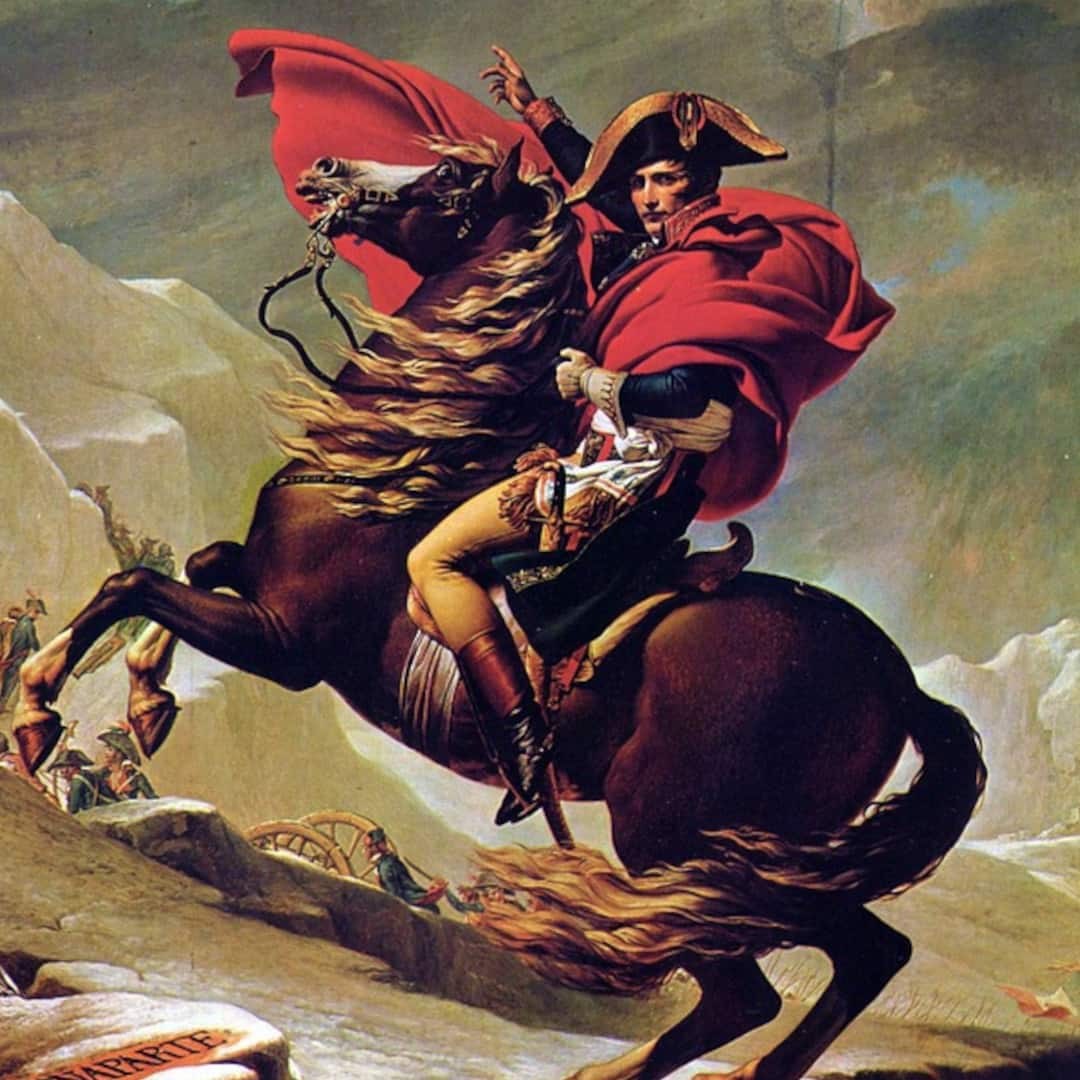

The Turn Of The Century (1860 - 1900)
By the end of the 19th century, the perfume industry was increasingly targeting middle-class women. The second empire was characterized by a brief but excessive infatuation with vetiver and patchouli.
However, this trend came to an end when the emergence of a strong middle class led to more sophisticated fragrances. The olfactory revolution was triggered by a brand new process of chemical synthesis that produced the first aldehydes. Perfumery was increasingly seen as an art and the trade of luxury goods flourished.
The History Of Fragrance & The Middle Classes
Perfumery was increasingly seen as an art and the trade of luxury goods flourished



The History of Perfume During The 20th Century
Middle-class women were becoming ever more the target of the fragrance industry towards the end of the 19th century and the first synthetic perfume ingredients were making their debut.
The brief ‘trend’ of patchouli and vetiver came to an end when the middle-class market demanded a more refined fragrance leading to the blossoming trade of luxury goods.
‘Modern’ perfume was birthed when both original and new fragrances such as heliotropin, coumarin and the first aldehydes caused an olfactory revolution as they were created through chemical synthesis.
Early 20th Century Perfume
The world enthusiastically welcomes the "Art Nouveau"

Early 20th Century (1900 - 1920)
1900 is referred to as the ‘Belle Epoque”, fragrance and perfume became a luxurious product with a beautiful bottle given a prestigious name. The world accepted and welcomed this “Art Nouveau” with great enthusiasm.
Celebrated perfumers such as Coty emerge as they release La Rose Jacqueminot in 1904 which, made them a millionaire almost overnight. Coty would also collaborate with Lalique to develop other early successes such as L'Effleur and Amber Antique.
Other fashion pioneers such as Helena Rubinstein and Elizabeth Arden who opened their doors at a similar time would add their own fragrances in later years such as the iconic Blue Grass in 1934.
The Extensive History of Perfume
The tale is certainly a curious one
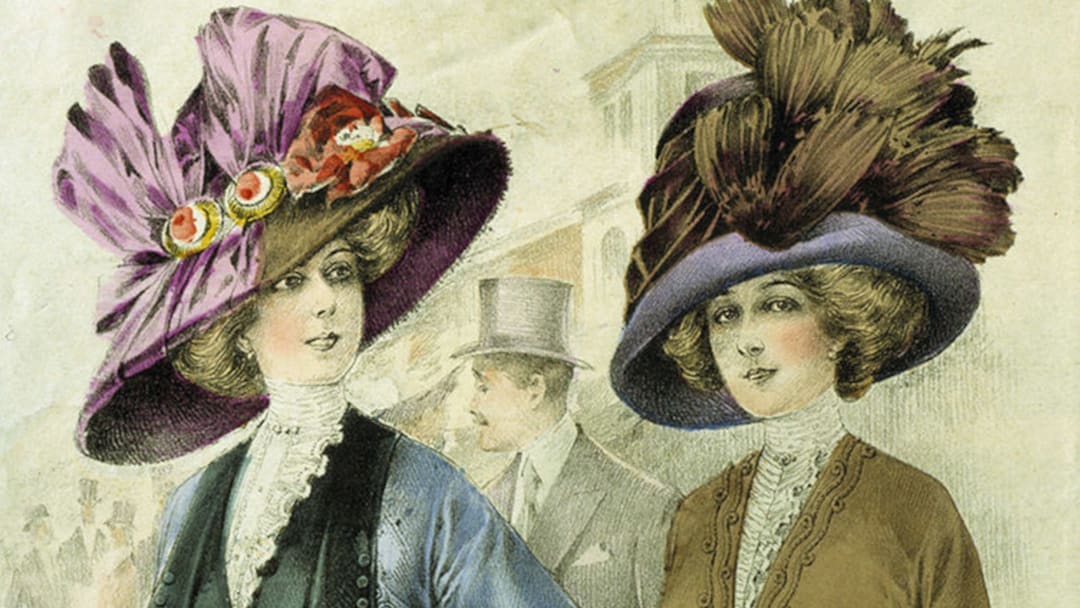

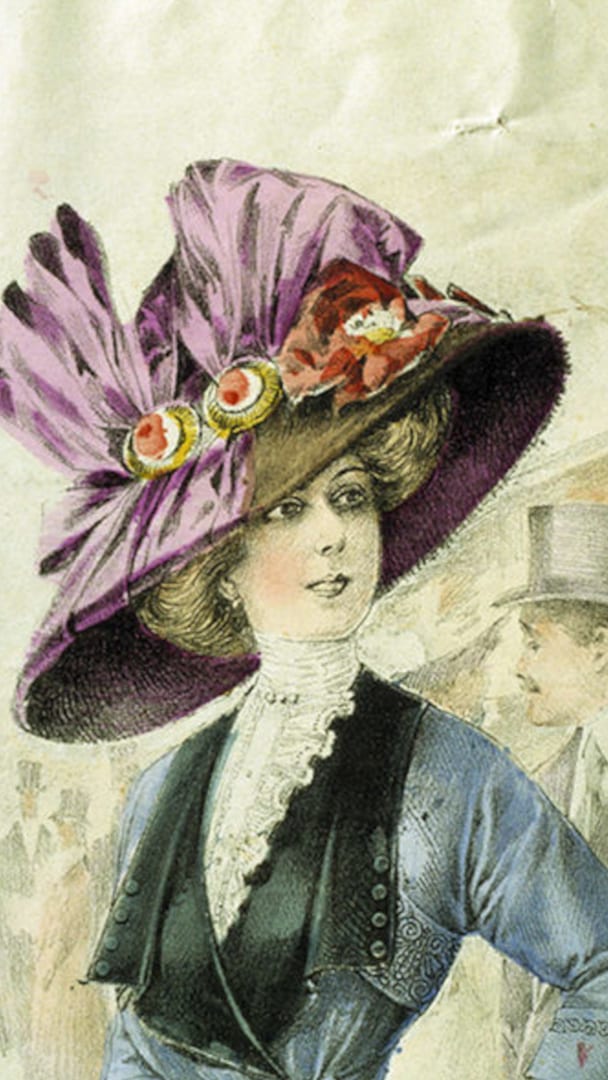
1920 - 1930
The 1920s are often synonymous with nights dancing to the Charleston, giddy lightness and innovations and breakings of speed barriers galore. However, there was much more at work in regards to the history of perfume.
During the extravagant years of the 1920s, women became emancipated and disposed of their restrictive garments (e.g. corsets etc.) and joined the workforce with pride.
The era of the boyish Garconne Flapper was the golden age of fragrances in the 1920s and early 1930s. Aldehydes gave the fragrance a touch of freshness and energy as well as a hint of sweetness.
There is no question, Chanel No. 5 is the fragrance that defined the 1920s but in many ways also the twentieth century, as it is even today amongst the best-selling fine fragrances. Wearing perfume was something only the very rich could afford at the time. Marilyn Monroe famously stated: “What do I wear in bed? Why, Chanel No. 5, of course.”
Guerlain’s Shalimar (1925) is another fragrance from this decade and it has become one of the most popular fragrances of all time!
· Chanel No.5: woody (patchouli, sandalwood), powdery/amber, aldehydic, floral (ylang-ylang, rose, iris)
· Guerlain Shalimar: balsamic (vanilla, opoponax), citrus, woody (sandalwood), powdery
The Emancipation Of Women
A breath of freshness and energy is added to the history of perfume

1930 - 1940
Then in 1930, we are greeted by widespread unemployment and the Great Depression.
The most notable fragrance of the 1930s was Joy by Jean Patou It was launched in 1929 (the year of the Crash on Wall Street) and despite being launched as ‘the world’s most expensive perfume’ at the time, it became a huge commercial success.
With its rose accord, it is to this day considered as one of the greatest floral fragrances of all time:
· Joy by Jean Patou: white floral (Jasmin, tuberose, ylang-ylang), rose, woody (sandalwood)
Perfumery & The Great Depression
The Great Depression brings with it one of the greatest floral fragrances of all time

1940 - 1950
The 1930s were concluded and followed by World War 2, fascism, communism and genocide.
On the other hand, as you have seen throughout the history of perfume, the industry can be incredibly resilient. Post-war couture perfumes created images of female seduction inspired by Hollywood for the images and females of a romantic Hollywood.
The fashion and beauty sector adapted incredibly to the more restrictive environment. Publications such as New Look and Marie Claire contained new agony columns as well as whole sections dedicated to beauty and fashion.
In order to stand out in these publications, designers would create their own “character fragrances” specific to their own style. In order to stand out, consumers would also wear designer fragrances
After the war, lighter and fresher perfumes became more popular.
Two of these are:
· L'Air du Temps by Nina Ricci: warm spicy (clove, carnation), floral (gardenia, jasmine, iris), aldehydic, woody and powdery.
· Miss Dior by Christian Dior: woody (oakmoss, vetiver, patchouli), green (galbanum), floral (narcissus, iris, carnation), aldehydic.
Perfumery During War Time
The fashion and beauty sector adapted incredibly to the more restrictive environment



Mid-20th Century (1950 - 1960)
The history of perfume now meets a world in turmoil. The cold war is just beginning, Europe looks towards the sex appeal of the US where rock'n'roll, chewing gum and blue jeans rule supreme.
The advent of automated household appliances has changed the lives of millions of women for the better with mainstream access to washing machines and refrigerators.
Ready-to-wear garments slowly replaced mass-produced clothing and fragrances became far more accessible. The keys to fragrance became mainstream, easier to comprehend and appealed to a broader audience.
The 1950s also saw the discreetly elegant and masculine vetiver and lavender Eaux de Toilette emerge into the mainstream grooming routine.
We also welcome Estee Lauder’s first fragrance into the World - Youth Dew.
The most memorable perfume of its era was Femme de Rochas (1944). This rich, sultry perfume was the scent of the ‘femme fatale’. Although Arpege by Lanvin was launched in 1927, it became very popular in the 1950s to become another scent of this time.
· Femme de Rochas: warm spicy (clove, cinnamon), woody (oakmoss, rosewood, vetiver), fruity (plum, peach, apricot), balsamic (benzoin, amber) and leather.
· Arpege de Lanvin: white floral (ylang-ylang, jasmine), woody (sandalwood, vetiver), aldehydic and powdery.
The Emergence Of Designer Perfumes
The beauty of Fougere is its combination of warm sensuality with light freshness.

1960 - 1970
As we reach 1960, we are over halfway through the 20th century, the ‘hippie’ movement and feelings of rebellion and sexual liberation covered the USA and the capitalist west.
However, the fashion industry took no notice of the conflict between economic prosperity, low unemployment and violent demonstrations against the Vietnam War.
In regards to fragrance and perfume, new olfactive freshness started to appear.
It should be recognised that there is a debate as to whether the Eaux fraiches were an indictment of perfume or a search for new lightness.
One memorable fragrance from the 1960s was:
·· Christian Dior’s Eau Sauvage: citrus (lemon, bergamot), aromatic (rosemary and fresh spicy (basil) - perfect for invigorating a room's atmosphere and washing away a stressful day.
An Era Of Rebellion & Sexual Liberation
Masculine 'Eaux de Toilette' became mainstream in the 1960s

1970 - 1980
In terms of the history of perfume, the 1970s saw a sizable shift against a background of feminism and neo-romanticism. Clothes were becoming a means to express one’s personality, ideas and attitudes towards life. As a consequence, people would approach perfume in the same way.
Both in France and in the USA, new fragrances endeavoured to be for the woman who saw themselves as proactive and sophisticated but yet also natural and softly romantic. The perfumes that didn’t meet this expectation were left on the shelf and abandoned. This led to women wearing a ‘lifestyle’ scent and claiming their individuality.
Men also started to use their fragrances outside of their shaving/grooming ritual.
Once Eaux de toilette arrived on the scene, fragrances truly designed for men joined the market. This pivotal moment in the history of perfume is best summarised as the clear distinction being made between men’s fragrance and after-shave.
Another way to make your room smell great and add to the ‘Flower Power’ of a 70ies styled atmosphere is with incense or an oil burner. Remember the Hippies?
The 1970s also saw a continuation of the 'Hippie' Movement who had their own unique scents that you can virtually smell when reading these:
· patchouli,
· sandalwood, or
· tea rose attars.
Burning incense from a beautifully carved, Indian-themed holder or warming patchouli oil in an oil burner would certainly give an instant retro feeling to a home.
A designer fragrance that exemplifies the era is YSL’s Opium with an accord centred around notes of incense (myrrh), spices (cinnamon, cloves, pepper) and sandalwood.
Three other notable fragrances were:
· Charlie by Revlon: woody (sandalwood, oakmoss), green (galbanum, hyacinth), aromatic (vetiver).
· Anais Anais by Cacharel: white floral (lily of the valley, hyacinth, lily, jasmine, honeysuckle) and green.
YSL's Rive Gauche: a fragrance for free and independent women, a gracious inhabitant of the city who likes the sun and wind more than anything but who is also quintessentially metropolitan.
Fashion & Self Expression
Clothes and perfume were a means to express one's self, ideas and attitudes



1980 - 1990
When the Berlin Wall collapsed, the 1980s were a decade of strong sensations and the dismantling of established cold war conventions. Bodybuilding and extreme sports explode into popularity and the corporate ‘rat-race’ is born.
In order to ensure a professional exterior, women would wear overly strong fragrances with ‘power suits’ while men’s fragrances simply enhanced the natural masculine essence. In the USA there were attempts to put a spin on these fragrances by adding new fruity notes that had moderate success.
The standout fragrance of the Eighties was Poison by Christian Dior. You could not only see the big shoulder pads but Poison had unrivalled power to radiate its perfume and announce your entrance with a scent!
· Poison by Christian Dior: floral (tuberose), fruity (plum, berry), balsamic (Opoponax, honey) and woody.
The Professional Exterior & The Masculine Essence
Women would wear overly strong fragrances with "power suits''



The Turn Of The Century (1990 - 2000)
onAids, War and the ‘millennium bug’ brought concern and fear to the centre of people’s minds who were pining for a purer world. The internet, a terrifying but exciting new phenomenon, creates an international community soon to affect all parts of our lives.
In such a harsh world, the history of perfume provides a more gentle and tender mood. Aromas and essences from caramel, vanilla and milk were used to recreate fondly remembered childhoods.
Distancing themselves from the 1980s, people were now wearing fragrances in order to seduce one another and men were becoming open to the idea of sharing their emotions. Bouquets and “Eaux” of freshwater satisfied our thirst for purity.
The fragrances and bouquets of the 1990s went back to basics by focusing on the four main elements: earth, wind, fire and water. This would create natural aromas that would imitate the sea, flowers and other plants.
The iconic fragrances from the 1990s include:
- Angel (1992): This star-shaped bottle is the dream of designer Thierry Mugler, with its bright red-white colour scheme and the characteristic red and white lettering. It was used to capture the spirit of the 1990s and was born of Mueller's love of the city of Paris and its rich culture and history.
- CK One (1994): The first unisex fragrance with widespread appeal. Composed by perfumers Alberto Morillas and Harry Fremont, CK One is infused with a combination of dried wood, earthy notes and a hint of citrus that gives the iconic 1990s scent a barely-there flair.
- Gucci Rush (1999): Found in a red bottle that looks like an evening bag and it is very distinctive, with its smoky notes that add depth to the opening rubber and a juicy peach remedy that dries out on a warm floor. Often imitated, it is very unique and unmistakable as it blends well with the other fragrances and adds depth through the openings of the rubber.
A Time For Seductive Fragrances
The 'Eaux' satisfies a thirst for purity



Perfume In The 21st Century
In the search for purity and simplicity of the 1990s, the 21st century is about the entrepreneur's ability to determine their own destiny.
There are in fact up to ten different perfumes that are changing people’s thoughts about which smells are acceptable as well as fragrance more generally. To say these fragrances are becoming slightly unorthodox would be an incredible understatement.
Two standout examples would be:
- Mark Buxton’s Comme des Garcons replicates that of ‘a swimming pool of ink’.
- Antoine Lie’s Sécrétions Magnifigues produces accords that resemble the odour of sweat and semen.
Needless to say, the question in regards to which perfumes are acceptable is certainly being asked.
The Power of Perfume In The 21st Century
The passion to write one's own story and for their fragrance to reflect it

2000 - 2010
Post 9/11 brought an urgency for instant gratification but after that torrid phase, people transitioned to focusing more on authenticity and emotional connection and many perfume houses were drawn to explore ‘vintage’ aromas and bouquets.
This curiosity led to a boom in nouveau chypres that were given a modern twist with floral or fruity touches such as Coco Mademoiselle.
A Thriving Focus On Emotional Connectivity & Authenticity
A further exploration of 'vintage' aromas and bouquets

2010 - 2020
Borders also disappeared with the invention of social media platforms such as Facebook when the whole world is opened up and people have so many more options to explore.
This grew into a massive fad of the fragrance industry showing near 100% devotion to limited-editions to try and compete with the rest of the world.
We found a few examples that we think illustrates this point perfectly:
- Coach Dreams Eau de Parfum - The Joshua tree provides the unexpected base for this new 2020 fragrance. This perfume has a beautiful aroma, especially in combination with orange and gardenia, with a hint of citrus and a little earthy spice.
- Miss Dior Rose N’Roses Eau de Toilette - Fresh Rose from Grasse is the main note but It also exuded notes of white musk and spicy bergamot, giving it a touch of warmth and spice.
- YSL Black Opium Eau de Parfum Neon - This potent 2020 perfume is formed by a bold mix of notes from dragon fruit, orange and coffee. If you are looking to make an entrance, your presence certainly won’t go unnoticed.
Perfume As A Means To Take Control
The 21st century opened up a whole new world with so much to explore


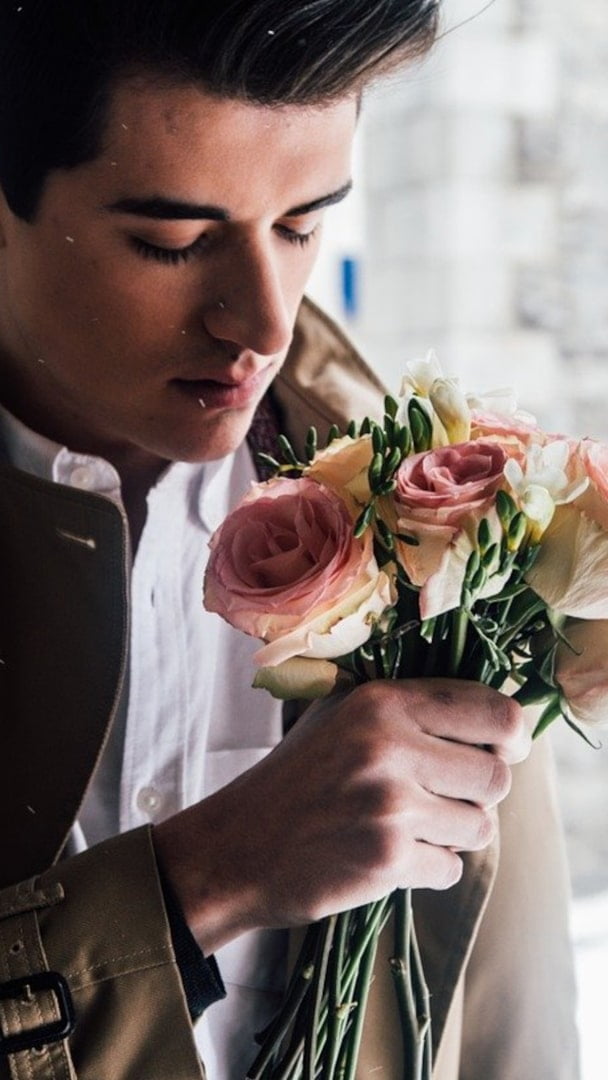
The Present Day & Looking Forward
Today, fragrances and perfumes are popular fashion accessories that are used by millions of people all over the world. Several layers form rich and complex perfumes that are often a blend of both natural and synthetic ingredients.
We have also never been so spoilt for choice with an abundance of timeless classics and celebrity perfumes alike. From your inexpensive to boundless exclusivity in regards to price points, the potency of the perfume is very much up to the consumer.
Throughout the history of perfume, fragrances have never been so abundant and accessible to the masses. They are no longer reserved for the upper classes and aristocracy.
The history of perfume is being written every day and emerging trends such as the campaigns for sustainable development and ecology certainly leaves the door open for an exciting new chapter.
Wearing perfume and cologne is now a fun way to express your personal tastes and style! If you’re wondering what fragrances are available to purchase you can browse.
The Rise of Niche Perfume
Looking forward to the fragrances of the future



A Brief History of the Major Perfumery Houses
Chanel
Chanel is a luxury fashion house that needs no introduction. The brand is famous for its elegant and timeless style, and its fragrances are no exception. In this summary, we will explore the history of the Chanel perfume brand and some of its most iconic fragrances.
The Chanel perfume brand was established in 1921, when the founder of the fashion house, Gabrielle "Coco" Chanel, launched her first fragrance, Chanel No. 5. The scent was created by the legendary perfumer Ernest Beaux and featured a blend of floral and musky notes, including jasmine, rose, and ylang-ylang. Chanel No. 5 was an instant success and has since become one of the most iconic fragrances in the world.
Over the years, Chanel has launched a wide range of fragrances, each designed to capture the essence of the brand's elegant and sophisticated style. One of the brand's most iconic fragrances is Chanel No. 19, which was launched in 1970. The scent features a blend of green and floral notes, including iris, galbanum, and neroli, creating a sophisticated and complex fragrance that is perfect for a special occasion.
Another popular fragrance from Chanel is Coco Mademoiselle, which was launched in 2001. The scent features a blend of citrus and floral notes, including orange, bergamot, and jasmine, creating a fresh and feminine fragrance that is perfect for everyday wear. Coco Mademoiselle has since become one of the brand's best-selling fragrances and is loved by women all over the world.
Chanel also has a range of fragrances for men, including Bleu de Chanel, which was launched in 2010. The scent features a blend of citrus and woody notes, including grapefruit, cedar, and sandalwood, creating a fresh and masculine fragrance that is perfect for the modern man. Another popular fragrance for men is Allure Homme Sport, which was launched in 2004. The scent features a blend of citrus and spicy notes, including mandarin, pepper, and vetiver, creating a refreshing and energetic fragrance that is perfect for a day out.
Dior
Dior is another luxury fashion house that doesn't need an introduction. The brand has been synonymous with elegance, sophistication, and timeless style since it was founded in 1946 by Christian Dior. In addition to its couture and ready-to-wear lines, Dior is also renowned for its perfume brand, which has launched some of the most iconic fragrances in the world.
The Dior perfume brand was established in 1947, just a year after the fashion house was founded. The brand's first fragrance, Miss Dior, was created by perfumer Jean Carles and featured a blend of floral and spicy notes, including jasmine, rose, and patchouli. The scent was an instant success and has since become one of the most iconic fragrances in the world.
Over the years, Dior has launched a wide range of fragrances, each designed to capture the essence of the brand's elegant and sophisticated style. One of the brand's most iconic fragrances is J'adore, which was launched in 1999. The scent features a blend of floral and fruity notes, including jasmine, ylang-ylang, and peach, creating a luxurious and feminine fragrance that is perfect for a special occasion.
Another popular fragrance from Dior is Dior Homme, which was launched in 2005. The scent features a blend of floral and woody notes, including iris, lavender, and vetiver, creating a sophisticated and masculine fragrance that is perfect for the modern man. Dior Homme has since become one of the brand's best-selling fragrances and is loved by men all over the world.
Dior also has a range of fragrances for men and women, including the Poison range for women and the Fahrenheit range for men. The Poison range includes fragrances such as Hypnotic Poison and Poison Girl, which feature a blend of spicy and sweet notes, including vanilla, almond, and cinnamon. The Fahrenheit range includes fragrances such as Fahrenheit and Fahrenheit Absolute, which feature a blend of woody and spicy notes, including leather, violet, and nutmeg.
Guerlain
Guerlain is a French luxury perfume and cosmetics house that has been in operation for over 180 years. The company has a reputation for creating some of the world's most exquisite fragrances and cosmetics, and is renowned for its quality and attention to detail.
Guerlain was founded in Paris in 1828 by Pierre-Francois Pascal Guerlain, who began creating fragrances and cosmetics for the French nobility. Over the years, the company has been passed down through several generations of the Guerlain family, each adding their own unique touch to the brand.
One of Guerlain's most iconic fragrances is Shalimar, which was first launched in 1925. The scent was inspired by the love story between an Indian emperor and his wife, and features a blend of floral and oriental notes, including jasmine, iris, and vanilla. Shalimar has since become one of the most famous and recognizable fragrances in the world, and is loved by women of all ages.
Another popular fragrance from Guerlain is Jicky, which was launched in 1889. The scent is considered to be one of the first modern perfumes, and features a blend of floral and spicy notes, including lavender, bergamot, and vanilla. Jicky was named after a young woman who had stolen the heart of Aime Guerlain, one of the company's founders, and has since become one of the most iconic fragrances in the world.
Guerlain has also launched a range of fragrances for men, including Habit Rouge and Vetiver. Habit Rouge was launched in 1965 and features a blend of woody and oriental notes, including vanilla, leather, and cinnamon. Vetiver was launched in 1961 and features a blend of citrus and woody notes, including bergamot, lemon, and vetiver.
Gucci
Gucci is one of the world's most well-known luxury fashion houses, and its fragrances are no exception. The brand's perfumes are designed to evoke the same sense of luxury and sophistication as its fashion lines.
Gucci's history as a perfume brand dates back to the 1970s when the first Gucci fragrance was launched. The brand's founder, Guccio Gucci, was born in Florence, Italy, in 1881. He started his career as a porter in a hotel and later worked as a leather goods salesman. In 1921, he founded the House of Gucci, a small leather goods shop in Florence. The brand quickly gained a reputation for quality and elegance, and by the 1950s, it had become a global luxury brand.
In the 1970s, Gucci launched its first fragrance, Gucci No. 1. The scent was a huge success and helped to establish Gucci as a major player in the fragrance industry. Over the years, Gucci has launched a wide range of perfumes, each designed to capture the essence of the brand's luxurious and glamorous image.
One of Gucci's most iconic fragrances is Gucci Pour Homme, which was launched in 2003. The scent is a blend of bergamot, cypress, violet, tobacco, and amber, creating a complex and sophisticated fragrance that is perfect for the modern gentleman. Another popular fragrance is Gucci Bloom, which was launched in 2017. The scent features notes of jasmine, tuberose, and Rangoon creeper, creating a fresh and floral fragrance that is perfect for the summer months.
Gucci also has a range of fragrances for women, including Gucci Guilty, which was launched in 2010. The scent is a blend of mandarin, pink pepper, peach, lilac, and amber, creating a sensual and feminine fragrance that is perfect for a night out. Another popular fragrance is Gucci Rush, which was launched in 1999. The scent features notes of gardenia, freesia, and jasmine, creating a bold and vibrant fragrance that is perfect for the confident and daring woman.
Yves Saint Laurent
Yves Saint Laurent is another global icon of the luxury fashion industry, a French house known for its elegant and timeless designs. In addition to its fashion line, Yves Saint Laurent also has a successful perfume brand, which offers a range of fragrances for both men and women. In this article, we will explore the history of the Yves Saint Laurent perfume brand and some of its most iconic fragrances.
The Yves Saint Laurent perfume brand was launched in 1964 with the release of its first fragrance, Y. The scent was created by perfumer Jean Amic, and features a blend of floral and spicy notes, including rose, jasmine, and patchouli. Y was an instant success and became a classic fragrance that is still loved by women today.
Another iconic fragrance from Yves Saint Laurent is Opium, which was launched in 1977. The scent was inspired by the exotic and sensual atmosphere of the Orient, and features a blend of spicy and floral notes, including mandarin, jasmine, and vanilla. Opium was controversial at the time of its release due to its name and advertising campaign, but has since become one of the brand's most popular fragrances.
In 1983, Yves Saint Laurent released its first fragrance for men, Kouros. The scent was created by perfumer Pierre Bourdon, and features a blend of spicy and woody notes, including coriander, oakmoss, and musk. Kouros has since become a classic men's fragrance and is loved by men around the world.
Yves Saint Laurent also offers a range of other fragrances for both men and women, including Black Opium, L'Homme, and Libre. Black Opium is a modern twist on the original Opium fragrance, featuring a blend of floral and woody notes, including coffee, vanilla, and cedarwood. L'Homme is a fresh and woody fragrance for men, featuring a blend of ginger, cedarwood, and violet leaves. Libre is a floral and woody fragrance for women, featuring a blend of lavender, orange blossom, and vanilla.
Givenchy
Givenchy is a French luxury fashion house that is well-known for its elegant and sophisticated style. The brand has a long and illustrious history, and its fragrances are no exception.
The Givenchy perfume brand was established in 1957 when the founder of the fashion house, Hubert de Givenchy, launched his first fragrance, L'Interdit. The scent was created for Audrey Hepburn, who was a close friend of Givenchy and one of his most famous clients. The fragrance was an instant success and helped to establish Givenchy as a major player in the perfume industry.
Over the years, Givenchy has launched a wide range of fragrances, each designed to capture the essence of the brand's elegant and sophisticated style. One of the brand's most iconic fragrances is Ysatis, which was launched in 1984. The scent features a blend of oriental and floral notes, including mandarin, jasmine, and vanilla, creating a rich and luxurious fragrance that is perfect for a special occasion.
Another popular fragrance from Givenchy is Very Irresistible, which was launched in 2003. The scent features a blend of rose, anise, and verbena, creating a fresh and feminine fragrance that is perfect for everyday wear. Very Irresistible has since become one of the brand's best-selling fragrances and is loved by women all over the world.
Givenchy also has a range of fragrances for men, including the classic Givenchy Gentleman, which was launched in 1974. The scent features a blend of spicy and woody notes, including patchouli, vetiver, and oakmoss, creating a masculine and sophisticated fragrance that is perfect for the modern gentleman. Another popular fragrance for men is Pi, which was launched in 1998. The scent features a blend of vanilla, tonka bean, and benzoin, creating a warm and sensual fragrance that is perfect for a night out.
Hermès
Estee Lauder
Estée Lauder is a global luxury beauty and skincare company, known for its innovative products and commitment to excellence.
Estée Lauder started its fragrance journey in 1953 with the launch of its first fragrance, Youth Dew. The perfume was originally created as a bath oil but became so popular that it was turned into a perfume. This marked the beginning of Estée Lauder's success in the fragrance industry.
Over the years, Estée Lauder has created several iconic fragrances, such as White Linen, Beautiful, and Pleasures. The company's fragrances have become synonymous with luxury and elegance, and are loved by millions of people worldwide.
Iconic Fragrances from Estée Lauder:
- Youth Dew: As mentioned earlier, Youth Dew was Estée Lauder's first fragrance, and it continues to be one of the company's most iconic scents. The perfume has a warm and spicy aroma, with notes of clove, rose, and lavender.
- White Linen: White Linen was launched in 1978 and has been a best-seller ever since. The fragrance has a fresh and floral aroma, with notes of jasmine, rose, and moss.
- Beautiful: Launched in 1985, Beautiful is a classic floral fragrance with notes of rose, lily, and jasmine. The perfume is known for its romantic and feminine aroma.
- Pleasures: Pleasures was launched in 1995 and has been a popular choice among women ever since. The fragrance has a fresh and floral aroma, with notes of peony, lily, and jasmine.
- Modern Muse: Launched in 2013, Modern Muse is a modern and sophisticated fragrance with notes of jasmine, patchouli, and musk. The perfume is known for its unique blend of feminine and masculine notes.
Hermès is a French luxury fashion house known for its high-end accessories, leather goods, and ready-to-wear clothing. The company also has a highly successful perfume brand, offering a range of fragrances for both men and women.
Hermès has a long and rich history in the perfume industry. The company first launched its perfume line in 1951, with the introduction of Eau d'Hermès. This fragrance was created by the renowned perfumer Edmond Roudnitska and was designed to be unisex.
Since then, Hermès has created several iconic fragrances, including the popular Jour d'Hermès, Terre d'Hermès, and Twilly d'Hermès. The company's fragrances are known for their quality, craftsmanship, and timeless elegance.
Iconic Fragrances from Hermès:
- Eau d'Hermès: Eau d'Hermès was the first fragrance launched by the brand and is considered an iconic scent. It has a unisex aroma that combines notes of leather, citrus, and spices.
- Jour d'Hermès: Jour d'Hermès was launched in 2013 and quickly became a favorite among women. The fragrance has a floral and fruity aroma, with notes of grapefruit, gardenia, and white flowers.
- Terre d'Hermès: Terre d'Hermès is a popular men's fragrance that was launched in 2006. It has a woody and earthy aroma, with notes of grapefruit, pepper, and vetiver.
- Twilly d'Hermès: Twilly d'Hermès was launched in 2017 and has become a popular choice among young women. The fragrance has a spicy and floral aroma, with notes of ginger, tuberose, and sandalwood.
- Un Jardin en Méditerranée: Un Jardin en Méditerranée is a unisex fragrance that was launched in 2003. It has a fresh and green aroma, with notes of fig, bergamot, and orange blossom.
Coty
Puig
Coty is a luxury perfumery house that has been creating fragrances since the early 20th century. The company is known for its high-quality, sophisticated scents and has produced several iconic fragrances over the years.
Coty was founded in Paris in 1904 by François Coty, a French perfumer and businessman. The company quickly gained a reputation for producing high-quality fragrances that were both sophisticated and accessible. Coty was also one of the first perfume houses to license its fragrances to other companies, allowing them to reach a wider audience.
Over the years, Coty has created several iconic fragrances, including the popular Chypre and L'Origan. The company has continued to innovate and create new fragrances, with a range of scents for both men and women.
Iconic Fragrances from Coty:
- Chypre: Chypre was created in 1917 and is considered a classic fragrance. It has a woody, floral aroma with notes of bergamot, oakmoss, and patchouli.
- L'Origan: L'Origan was created in 1905 and is one of the oldest fragrances produced by Coty. It has a spicy, floral aroma with notes of orange blossom, jasmine, and vanilla.
- Emeraude: Emeraude was created in 1921 and is another classic fragrance from Coty. It has a spicy, woody aroma with notes of bergamot, amber, and patchouli.
- Lady Stetson: Lady Stetson was launched in 1986 and quickly became a popular fragrance. It has a floral, powdery aroma with notes of rose, jasmine, and sandalwood.
- Exclamation: Exclamation was launched in 1988 and is a popular fragrance for young women. It has a fruity, floral aroma with notes of peach, apricot, and amber.
Puig is a Spanish luxury perfumery house that has been creating high-quality fragrances since 1914. The company has a reputation for producing sophisticated scents that are both classic and innovative. In addition to their own brands, Puig also holds the licenses for fragrances of other luxury brands.
Antonio Puig founded the company in Barcelona, Spain in 1914, and started producing its own fragrances in the 1940s. The company gained a reputation for creating high-quality, innovative scents and became one of the leading perfume houses in Spain. In the 1960s, Puig expanded internationally with licenses for the fragrances of other luxury brands such as Carolina Herrera and Nina Ricci.
Iconic Fragrances from Puig:
- Agua Lavanda: Agua Lavanda is one of Puig's most popular fragrances, first launched in 1940. It has a fresh, floral aroma with notes of lavender, lemon, and bergamot. It is a classic fragrance that has stood the test of time.
- Carolina Herrera Good Girl: Carolina Herrera Good Girl was launched in 2016 and quickly became a popular fragrance. It has a sensual, floral aroma with notes of jasmine, tonka bean, and cocoa. The iconic stiletto-shaped bottle adds to its appeal.
- Paco Rabanne Lady Million: Paco Rabanne Lady Million was launched in 2010 and is a modern classic. It has a fresh, floral aroma with notes of orange blossom, raspberry, and honey. The diamond-shaped bottle adds to its glamour.
- Nina Ricci L'Air du Temps: Nina Ricci L'Air du Temps is a classic fragrance that has been produced since 1948. It has a floral, spicy aroma with notes of gardenia, jasmine, and carnation. The iconic dove-shaped bottle is instantly recognizable.
- Prada Candy: Prada Candy was launched in 2011 and is a popular fragrance for young women. It has a sweet, musky aroma with notes of caramel, vanilla, and benzoin. The stylish, minimalist bottle adds to its appeal.
Magazine & Blog
Read in our Blog & Magazine about:
- Anything 'Making Scents', e.g. perfume memories
- Home Fragrance, Couture Perfume, Skin / Bath / Body Care
- Ingredients, e.g. natural / organic essential oils, flowers, bees, waxes.
- Your Home, e.g. beautiful interior designs, architecture, decor, ...
- Food, Drink, e.g. essential oils in foodd, desertd, drinks,...
- Britain, e.g. London, the Queen and Royal Family, ...
The Fragrance Boutique
Enjoy shopping in our online Boutique:
Natural Home Fragrance:
Luxury Scented Candles, Reed Diffusers and Refill Oils, Perfume Room Sprays, Sleep & Pillow Sprays, Fragrant Botanicals, Wardrobe Sachets, Drawer Liners, ...
Natural Perfume:
Eau de Parfum "Intense" Sprays, Eau de Toilette Sprays, Eau de Parfum Travel & Purse Sprays, The Perfume Experience Box, ...
Organic Bath, Body & Skin Care:
Hand Lotions and Creams, Hand Oil & Washes, Body Lotions, Body Washes and Shower Oils, Foam Bath, Hand Soap, …
Gifts & Giftsets:
Giftboxes, Giftsets, Luxurious Gift Bags & Tissue Paper, Gifts for Men, ...
A Niche Perfume Becomes Naturally You!
